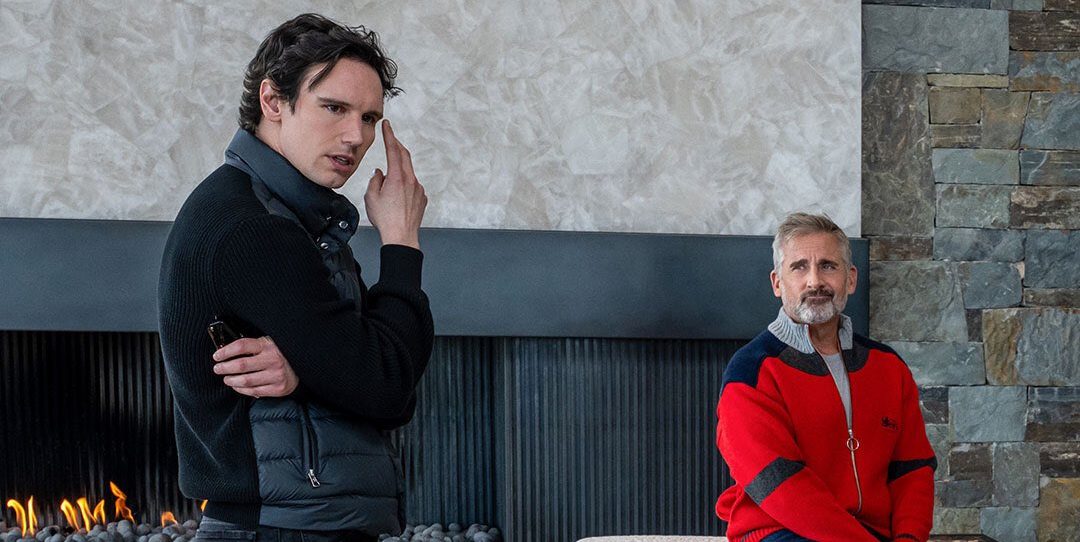In HBO’s ‘Mountainhead,‘ a group of billionaire friends gets together at the titular mountain estate of the poorest among them, Hugo, while the world burns outside their doorstep due to an international crisis. The wealthiest in the group, Venis Parish, turns out to be responsible for the incident, as his social media app, Traam, becomes a hotbed for AI-fueled chaos, incensing people into killing, raping, and pillaging across the globe. With death and destruction unfolding around them, Venis turns into the face of the disaster, as he and his app inadvertently cause huge damage. In the meantime, he tries to justify the problem by calling it beneficial in the long run. As such, his influence over the narrative is integral to the central drama while also providing a glimpse into the world of obscene wealth and social media.
Traam: A Social Media App With Seeming Parallels to Real-Life Platforms
For the most part, Traam is a fictional social media app in ‘Mountainhead’ created by writer-director Jesse Armstrong. The app has over 4 billion users, which practically classifies as half the world’s population, making it the leading social media app in the movie’s universe. While it does not exist in reality, it is hard not to make the connection with platforms such as Meta, owned and operated by billionaire Mark Zuckerberg. In the movie, Traam becomes infested with AI content generation tools, which are utilized by extremist groups to hijack potentially incendiary topics, causing a breakout of hostility between humans across the globe. It leads to some truly terrifying events worldwide, which are heightened in the film for more dramatic effect and more resonant storytelling.

The parallels between Traam and Meta can be seen through their involvement in controversial hot-button topics where social media apps have been accused of exacerbating already troubling societal problems. For instance, the latter has been held accountable by Amnesty International for playing a role in the propagation of human rights violations against the Rohingya ethnic group in Myanmar. In the movie, Venis complains that something similar has been levied at his doorstep by international bodies who are unhappy with the implementation of his social media app features. It prompts a larger discussion surrounding the ethics of online platforms and how they can be supercharged with intense malice and hatred if the wrong tools fall into the hands of the wrong people. This adds more leverage to Traam’s real-life roots, even though it remains mostly fictional.
Venis Parish is Vaguely Inspired By Leading Tech Billionaires
When developing the characters for ‘Mountainhead,’ writer-director Jesse Armstrong researched the most influential entrepreneurial figures in contemporary culture while also taking cues from his own fears surrounding AI technology. He looked at several leading voices in the field and their enormous accomplishments as a gateway into the movie’s basic idea. However, he later boiled down their key traits when crafting each character, albeit in a highly elevated and exaggerated manner. To that end, the character of Venis Parish can be seen as an amalgamation of people such as Elon Musk, Mark Zuckerberg, and Sam Altman, among others. This multitude of inspirations likely allowed Armstrong to touch upon a wide variety of topics through a single entity.

As we dissect Venis’ characteristics, it is evident that his most obvious ties are with Zuckerberg, such as being the face of a global social media platform. Meanwhile, his futuristic sensibilities seem to be loosely derived from Elon Musk. They also share the tag of the wealthiest man in the world with a net worth valuation that dwarfs competitors. Additionally, his pro-AI ideology is likely inspired by Sam Altman, who has been a proponent of using AI tools on a more regular basis to accelerate the adaptation period. Venis states that his AI should wreak havoc out in the world as it allows people to get their hatred, violence, and anger out once and for all, allowing a catharsis of sorts. However, internally, the character is quite juvenile and self-centered to the point that he is more of a caricature than a replica of the individuals mentioned.
Read More: Is Mountainhead a True Story? Is It a Real Mansion? Where is it Located?


